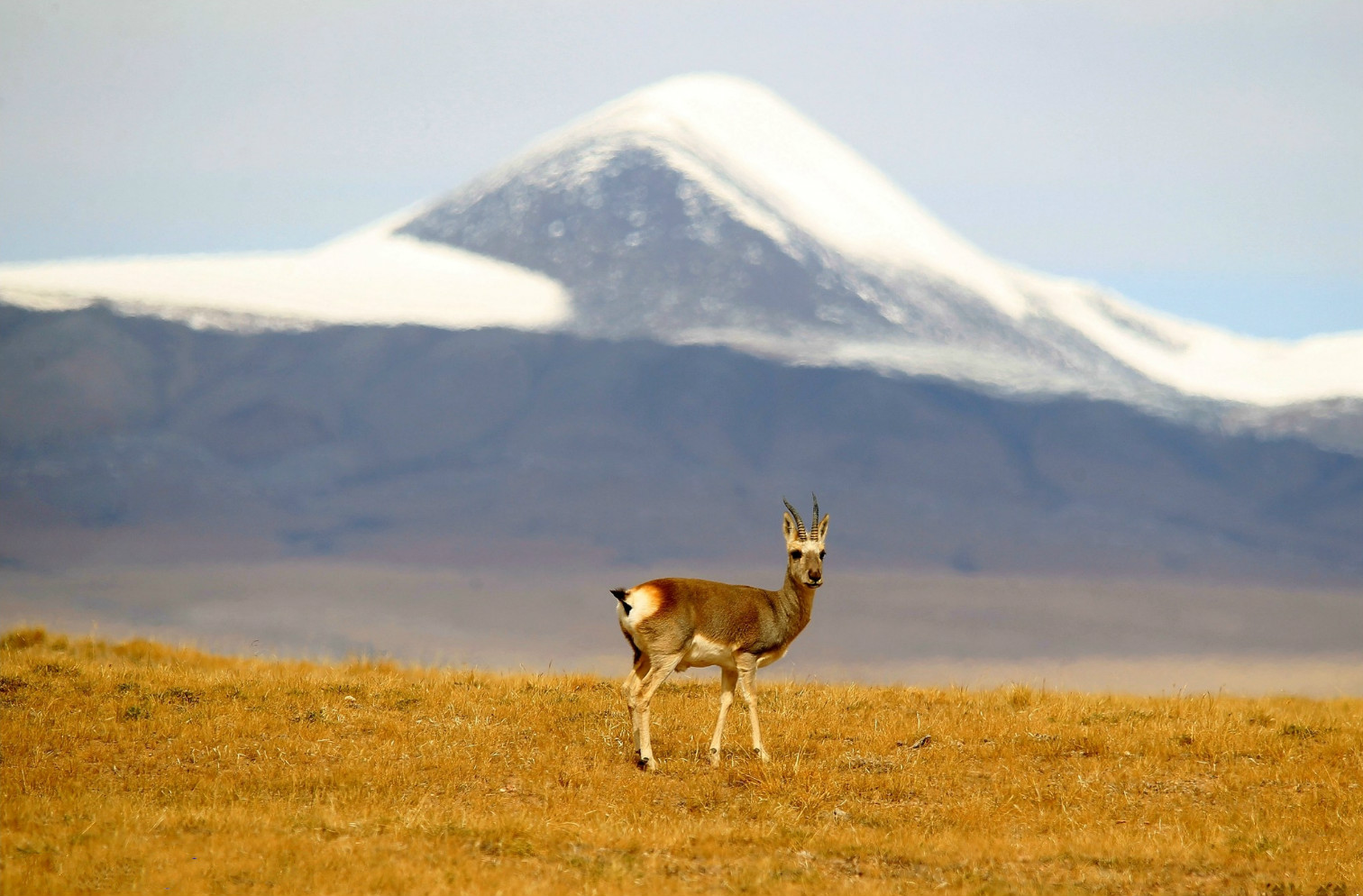Hoh Xil, Gulangyu enter World Heritage List

The unique ecosystem and vegetation types of Hoh Xil provide a suitable habitat for local mammals.
At the 41st session of the UNESCO World Heritage Committee, convened in Krakow, Poland, in early July, China’s natural sites Hoh Xil, in Qinghai Province, and Gulangyu, a historically significant settlement in Fujian Province, were added to the world heritage list. To date, 52 Chinese sites have been inscribed on the list.
Baffling situation
Hoh Xil, in Tibetan, means the “Lord of Ten Thousand Mountains.” Located in the hinterland of the Qinghai-Tibet Plateau, Hoh Xil is an important sub-region of the Sanjiangyuan Nature Reserve. One of the major headwater sources of the middle and downstream reaches of the Yangtze River, Hoh Xil is home to more than 230 species of wild animals unique to this area. The unique ecosystem and vegetation types constitute a favorable habitat and migratory route for the mammals who call the plateau home, such as the Tibetan antelope. Hoh Xil once had a population of antelope as high as 200,000.
However, the Shahtoosh shawl, woven with the down hair of the Tibetan antelope, became popular in the West in the late 20th century. The weaving of a Shahtoosh shawl requires fur from three or four antelope. This led to large numbers of antelope being hunted down specifically for their fur. The numbers continue to drop yearly and the population of Tibetan antelope sunk to fewer than 20,000.
Gulangyu has a very different history to Hoh Xil. It encountered many difficult situations before successfully being added to the World Heritage list. Due to damage caused by people, as well as erosion, some buildings and places closely related with the daily life of Gulangyu people have gradually lost their beautiful appearance. The historical and cultural elements conveyed by Gulangyu, the past hub of China-West exchanges, were also ignored for a long time.
Restoration, protection
As the repair work for cultural relic protection progressed and unapproved construction projects were demolished in recent years, the landscape of Gulangyu has gradually been restored.
After Gulangyu was inscribed on the Tentative List of World Heritage Sites, the municipal government of Xiamen city decided to renovate and renew the site in a holistic way and Gulangyu was clearly positioned as a key cultural spot and community. “We restored the old buildings and recovered their original appearance, giving them new luster and life,” said Cai Songrong, Director of the Gulangyu World Cultural Heritage Monitoring and Management Center.
The Tibetan antelope protection scheme at Hoh Xil started much earlier. The Qinghai provincial government established the Hoh Xil Nature Reserve in 1995 and upgraded it into a national nature reserve two years later. With an area of 45,000 square kilometers and a high altitude of more than 4,000 meters, it is China’s first nature reserve specially established for the protection of Tibetan antelope. Today, the antelope is no longer on the endangered species list, with a population of more than 60,000, thanks to the commitments made by the government, society and environmental NGOs.
Challenges, threats
Gulangyu has a fine musical tradition and the China Musicians’ Association nicknamed it “Piano Island.” However, Family Concert customs, one of the most distinctive traditional cultural activities, now face a tough situation. The surge in the tourism economy and emigration of native people in recent years have posed impediments to the inheritance of Gulangyu’s music culture represented by Family Concerts.
“It is an important task to preserve Gulangyu culture in a flexible way and reinvigorate the cultural atmosphere of the island,” said Zheng Yilin, director of the Gulangyu Administrative Committee.
In Hoh Xil, deposits of gold, flammable ice and other resources remain tempting targets for various outlaws and criminals, which pose major challenges to the site protection. In addition, other threats include grassland degradation and desertification. To address these issues, bans on livestock grazing on public lands and voluntary resident resettlement are needed.
